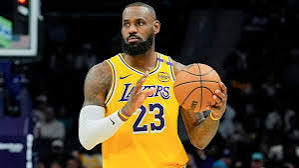When LeBron James first stormed into the NBA straight out of high school in 2003, the world witnessed a force of nature. The young man from Akron, Ohio, drafted as the number one pick by the Cleveland Cavaliers, dazzled fans and confounded defenders with his explosive athleticism and all-round brilliance. Back then, LeBron’s game was built on raw power and speed—he would bulldoze his way to the rim, leap higher than anyone else, and finish through contact with a flair that left crowds gasping. His physical gifts made him an instant superstar, and opponents had no answer for his combination of size, strength, and agility.
But as the years rolled by, LeBron’s style began to evolve, shaped by experience, changing team dynamics, and the natural effects of time. Critics early in his career argued he relied too much on athleticism, predicting he would struggle as age took its toll. Yet, LeBron proved them wrong by reinventing himself, adapting his game to remain at the top even as the NBA itself transformed. Gone are the days when he simply overpowered defenders; today, LeBron is as much a cerebral tactician as he is a physical marvel.
During his first stint with the Cavaliers, LeBron was the team’s engine, responsible for both scoring and creating opportunities for teammates. His ability to read defenses and make pinpoint passes was already evident, but he often carried the entire offensive load, driving hard to the basket and forcing defenses to collapse. This approach led to historic performances, like his 96 and-one finishes in the 2008–09 season—a record that still stands. However, as he matured, LeBron began to refine his skills, developing a more reliable jump shot and learning to control the pace of the game. He became more methodical, surveying the floor and picking apart defenses with patience and precision.
LeBron’s move to the Miami Heat in 2010 marked a significant turning point. Surrounded by stars like Dwyane Wade and Chris Bosh, he learned to play within a more structured system, sharing the spotlight and adjusting his style to fit the team’s needs. He added a deadly pull-up jumper to his arsenal and became a more efficient scorer, no longer relying solely on brute force. His time in Miami also saw him improve defensively, using his basketball IQ to anticipate plays and disrupt opponents, even if the highlight-reel blocks became less frequent.
Returning to Cleveland and later joining the Los Angeles Lakers, LeBron continued to adapt. The NBA was changing, with an increased emphasis on three-point shooting and spacing. LeBron responded by improving his outside shot and embracing a more versatile offensive role. His post-up game became a weapon, allowing him to exploit mismatches and create opportunities for teammates. Even as his athleticism naturally declined with age, LeBron’s understanding of the game deepened. He mastered the art of manipulating defenses, using subtle movements, pivots, and body control to get to his spots and set up others.
Today, LeBron James stands as a testament to longevity and reinvention. At an age when most players have long retired, he remains a dominant force, not just because of his physical gifts, but because of his unmatched basketball intelligence. He reads the game like a chess grandmaster, always a step ahead of the opposition. Whether orchestrating the offense from the top of the key, backing down defenders in the post, or launching threes with confidence, LeBron’s game is a blend of power, finesse, and wisdom.
In the ever-evolving landscape of the NBA, LeBron James has not only kept pace but set the standard for adaptation. From the high-flying teenager who took the league by storm, to the seasoned veteran orchestrating plays with surgical precision, LeBron’s journey is a masterclass in growth, resilience, and basketball artistry. As the King continues to defy Father Time, his legacy is not just in the records he breaks, but in the way he has continually reshaped his game—and the game itself—for over two decades.







